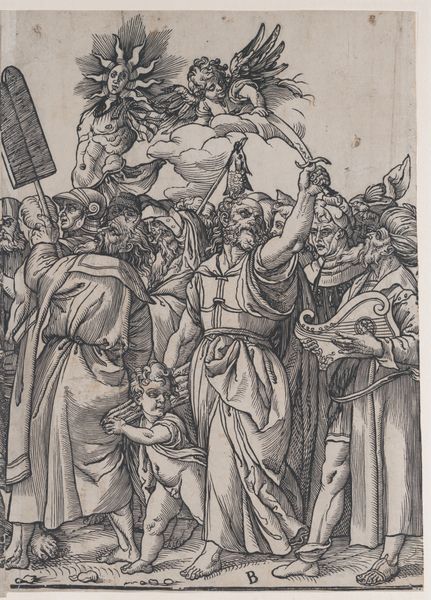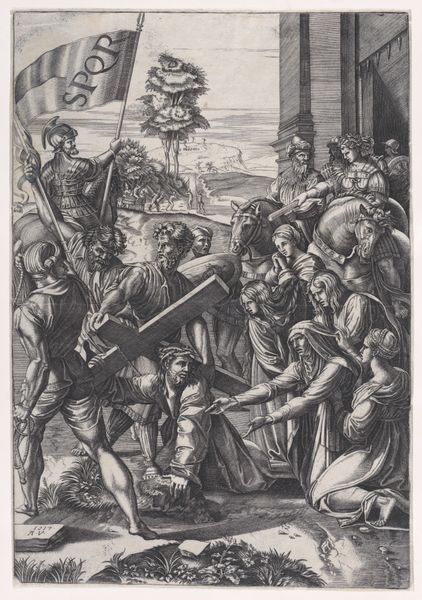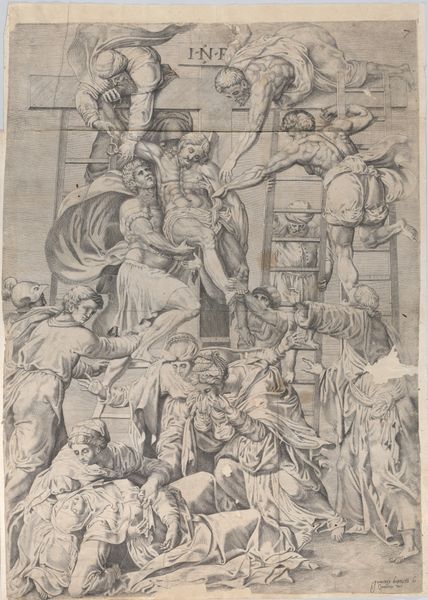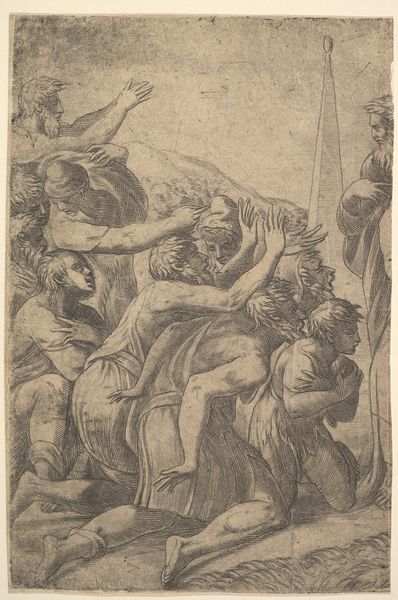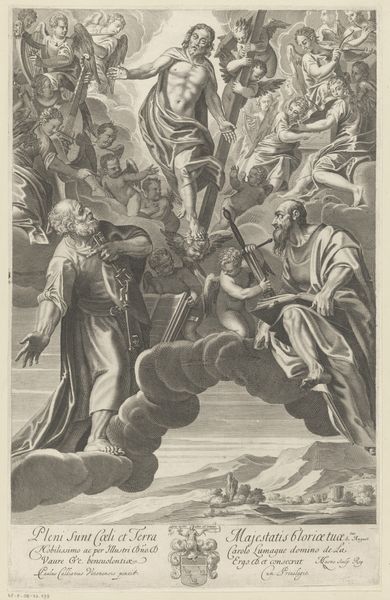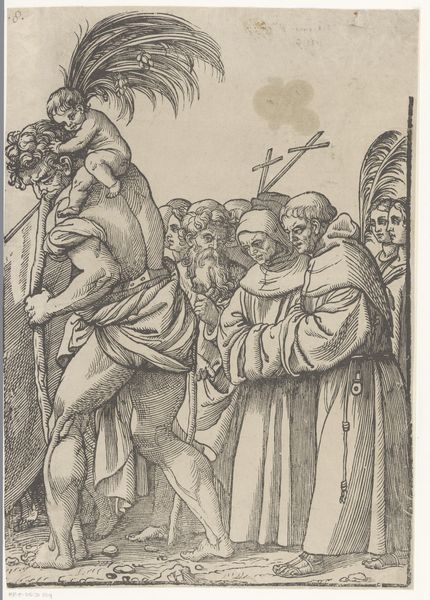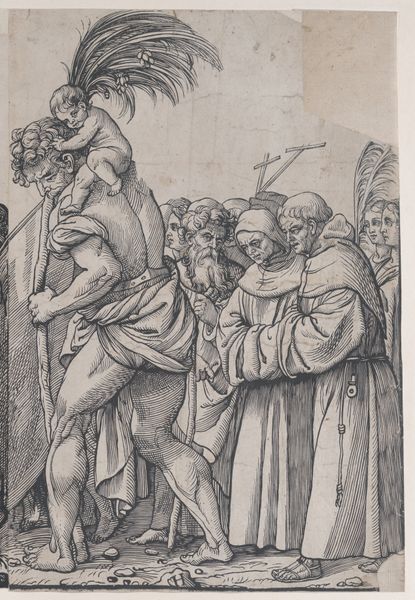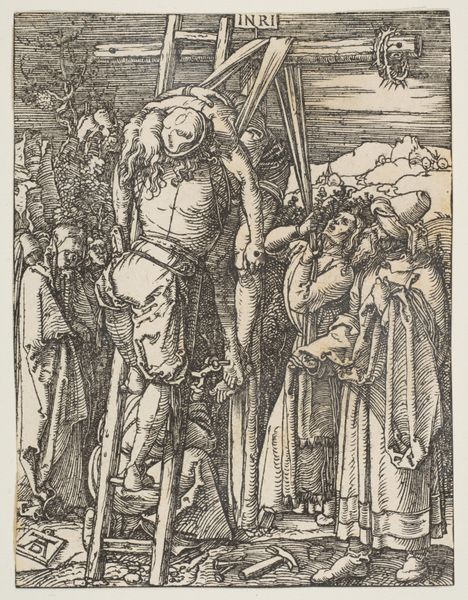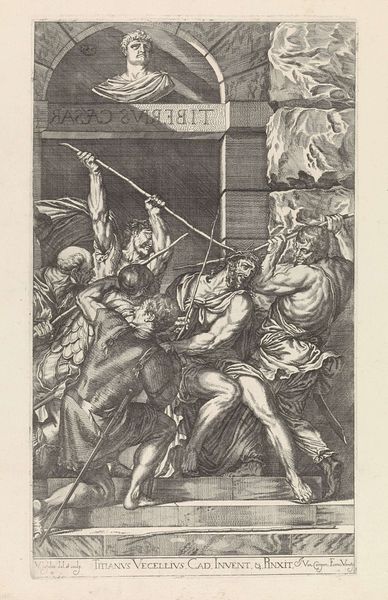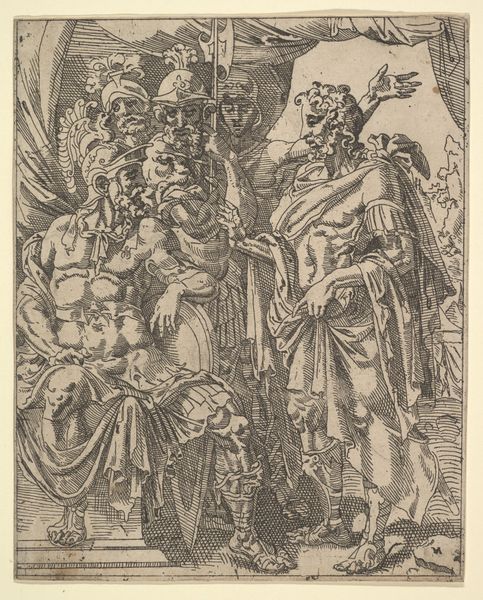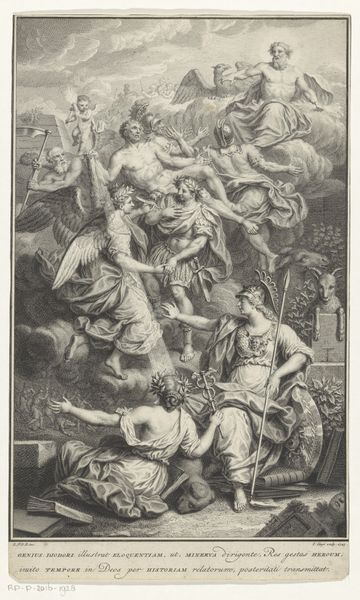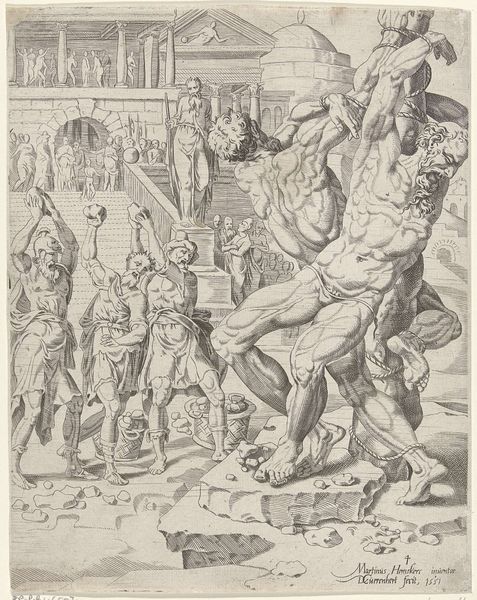
print, intaglio, engraving
#
allegory
# print
#
intaglio
#
figuration
#
history-painting
#
northern-renaissance
#
engraving
Dimensions: height 375 mm, width 278 mm
Copyright: Rijks Museum: Open Domain
Curator: Standing here at the Rijksmuseum, we're observing "Triumph of Christ (second part)," an engraving made by Andrea Andreani, sometime between 1510 and 1629. Editor: It’s remarkably dense. So many figures crammed into the space. The lines create a real sense of chaotic energy, a fervor, almost. What’s happening here? Curator: It depicts a triumphal procession, rich with allegory and historical painting elements characteristic of the Northern Renaissance. Notice how Christ isn't present himself but symbolized, with motifs referencing both spiritual victory and perhaps contemporary political aspirations? We also have that figure bearing a solar face. Editor: This feels so tied to the specific conditions of its production, doesn’t it? I mean, the choice of an engraving—think about print culture emerging and these images circulating. Who had access? What messages were disseminated through this easily reproducible medium, especially to those outside the elite? I see such emphasis on community through its design. Curator: Exactly! And consider Andreani's mastery of the chiaroscuro woodcut technique, playing with layers and multiple blocks to achieve these dynamic tonal contrasts. What kind of labor, what investment went into this medium? What does it tell us about this work, and art in general? It is like Andreani emphasizes not only religious iconography but also the artistic capabilities he possessed. Editor: It speaks volumes, particularly when we understand the socio-political context. Images of triumph like this weren't simply religious; they reinforced power structures, projected specific identities, and played into narratives of domination and salvation, so with whose money and work did these things manifest from their own image? The marginalization and access, really? Curator: Agreed. There's a dialogue happening between the symbolic representation and the physical manifestation of the artwork through printing processes. Editor: Understanding those details reframes our engagement. It is as much about interrogating how those histories shaped, and continue to shape our interpretations, is essential. Curator: Absolutely. It makes you reconsider the relationship between materiality, messaging and that historical moment as a whole. Editor: It transforms what could be a passive viewing experience into something really active and engaging. You start looking for the connections beyond just the image itself.
Comments
No comments
Be the first to comment and join the conversation on the ultimate creative platform.
